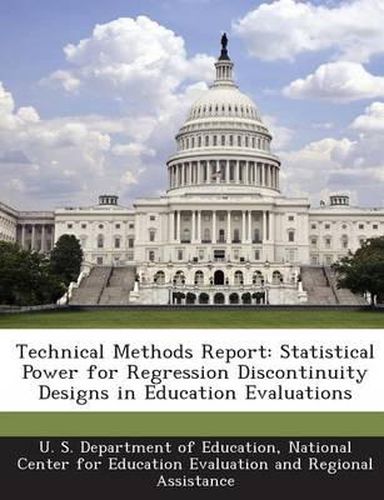Readings Newsletter
Become a Readings Member to make your shopping experience even easier.
Sign in or sign up for free!
You’re not far away from qualifying for FREE standard shipping within Australia
You’ve qualified for FREE standard shipping within Australia
The cart is loading…






Technical Methods Report: Statistical Power for Regression Discontinuity Designs in Education Evaluations examines theoretical and empirical issues related to the statistical power of impact estimates under clustered regression discontinuity (RD) designs. The theory is grounded in the causal inference and HLM modeling literature, and the empirical work focuses on commonly-used designs in education research to test intervention effects on student test scores. The main conclusion is that three to four times larger samples are typically required under RD than experimental clustered designs to produce impacts with the same level of statistical precision. Thus, the viability of using RD designs for new impact evaluations of educational interventions may be limited, and will depend on the point of treatment assignment, the availability of pretests, and key research questions.
$9.00 standard shipping within Australia
FREE standard shipping within Australia for orders over $100.00
Express & International shipping calculated at checkout
Technical Methods Report: Statistical Power for Regression Discontinuity Designs in Education Evaluations examines theoretical and empirical issues related to the statistical power of impact estimates under clustered regression discontinuity (RD) designs. The theory is grounded in the causal inference and HLM modeling literature, and the empirical work focuses on commonly-used designs in education research to test intervention effects on student test scores. The main conclusion is that three to four times larger samples are typically required under RD than experimental clustered designs to produce impacts with the same level of statistical precision. Thus, the viability of using RD designs for new impact evaluations of educational interventions may be limited, and will depend on the point of treatment assignment, the availability of pretests, and key research questions.